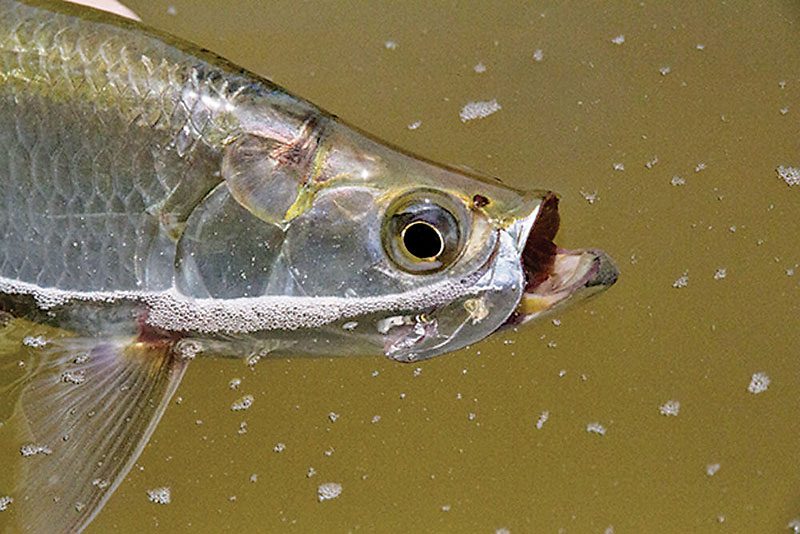
Let’s talk tarpon. This is a fish that is sometimes misunderstood. Most anglers think that you have to hire a specific guide and use only the most expensive gear to even get a chance at jumping a silver king. This is not necessarily true! Tarpon in our area have a migration pattern that encompasses a lot of different zones. Studies show that a strong run of tarpon move up from the lower part of the state in the spring and remain until around October. These fish congregate in mid-summer and then head offshore to spawn in the deeper water where their fertilized eggs can catch the loop current which flows the larvae to the southern part of the Gulf. Tarpon have a different life cycle then other bony fish; the young look more like an eel then a fish. This changes after a couple of months and when they reach the mangrove areas, they start to look and behave like the fish we know.
In the early summer, fly fisherman set up in areas where it’s easy to sight cast to moving fish. Long chains of tarpon head to the west and school up. This is a very difficult way to fish for them and the guides running these charters are extremely territorial. It’s a good idea not to encroach on a flats skiff with an angler on the bow and a guide on the poling platform. You will be challenged, and it’s better to just give them some distance. That doesn’t mean you can’t find a place to hook up a tarpon. In September, the post-spawn fish are hungry and will eat a variety of baits. Live pinfish or small grunts on a float can be a sure thing. Even a dead mullet, or piece of one, fished on the bottom can produce a bite and a catch. The late summer spots are any of the passes, such as West Pass St. George or East Pass Dog Island. Coves from Alligator Point to Rattlesnake Cove are excellent areas to try. Remember, you will have to chase these bigger fish so have a float release on an anchor line. Some of these tarpon are 100 pounds or better and they will test your boating skills to the max. Circle hooks of 4/0 or better on 50 pound test leaders should be used with medium-heavy tackle. Give this a try, they are a fantastic game fish!
I know it is hot and we’re all waiting for a break. The kingfish bite offshore remains solid along with amberjack. You will have to venture out a bit since the water temperature is high and the inshore waters are dark with rain water. Don’t forget to look for mangrove snapper on any structure, they are open all year. Inshore has been strong with the trout bite still happening, but you better fish them early in the day since the water warms pretty fast by late morning. Even though the summer is still with us, the fishing’s hot too!
Good luck out there and be safe.
CAPT. CHESTER REESE
Natural World Charters
(850) 228-9060
www.naturalworldcharters.com
